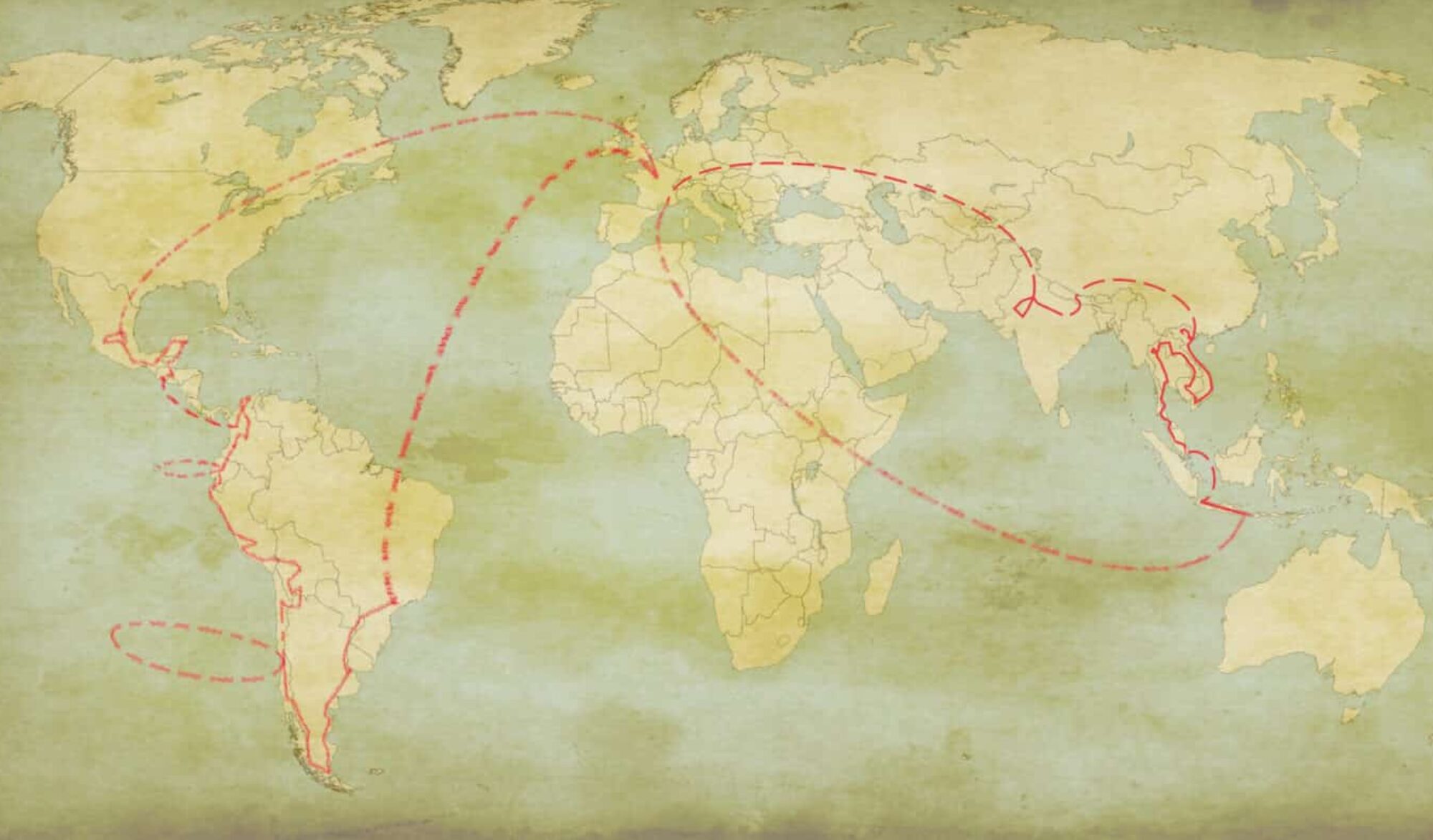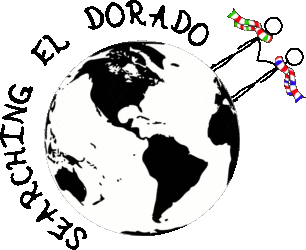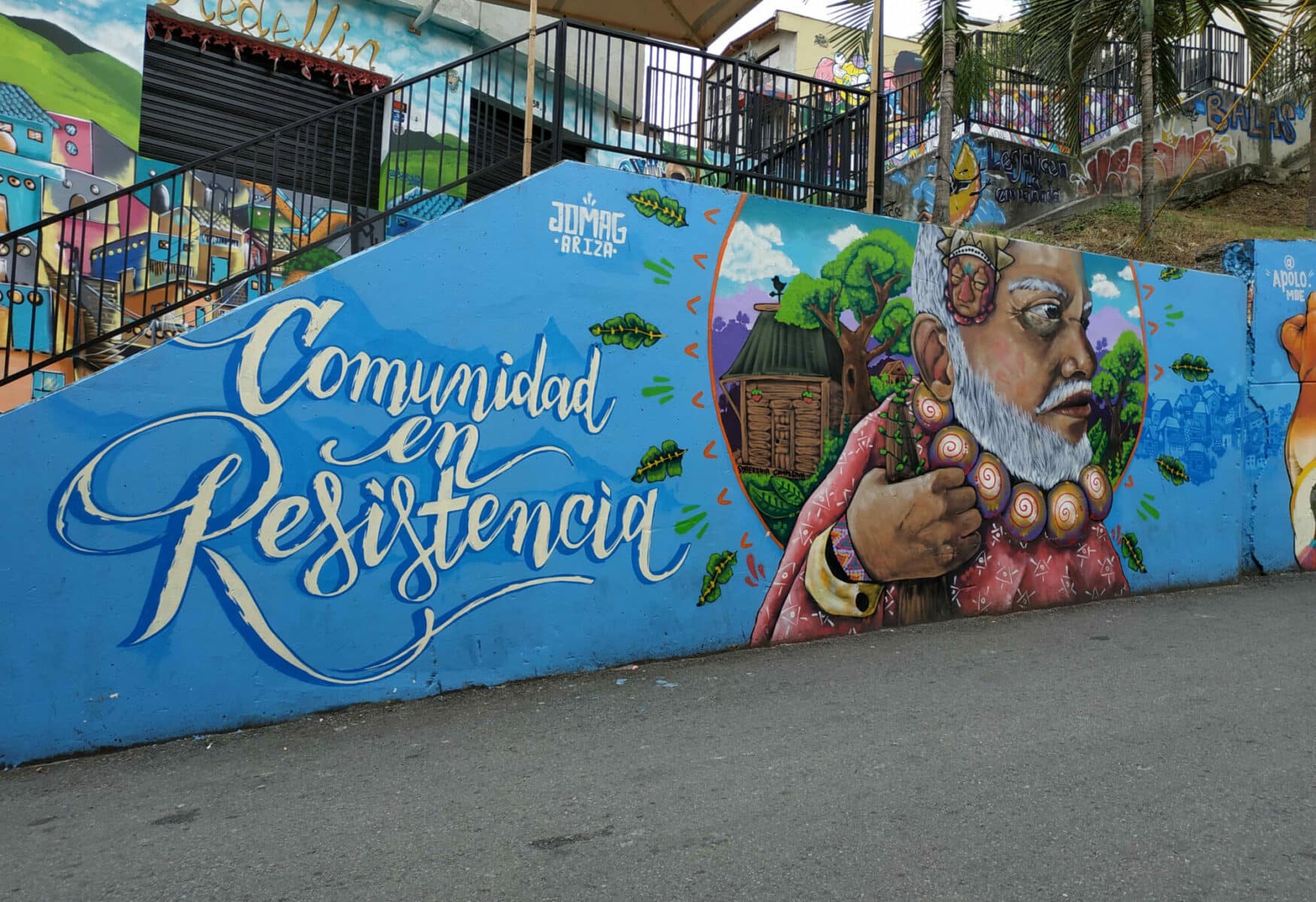When we were still living in Paris, we offered on Couchsurfing our relatively comfortable sofa-bed. We had the chance to host a lovely Colombian/English couple for a few days. They offered to return the favor if we were passing by Medellin. And just like that, Medellin became a mandatory stop during our trip.
After some months we finally had the opportunity to discover the city, partly through their eyes, thanks to their amazing hospitality.
The metro of Medellin
The metro is the most convenient way to move around the city. If you are used to use public transportation, you might be surprised by how clean the trains are and how civil all the people are. Coming from Paris, it was almost a shock!
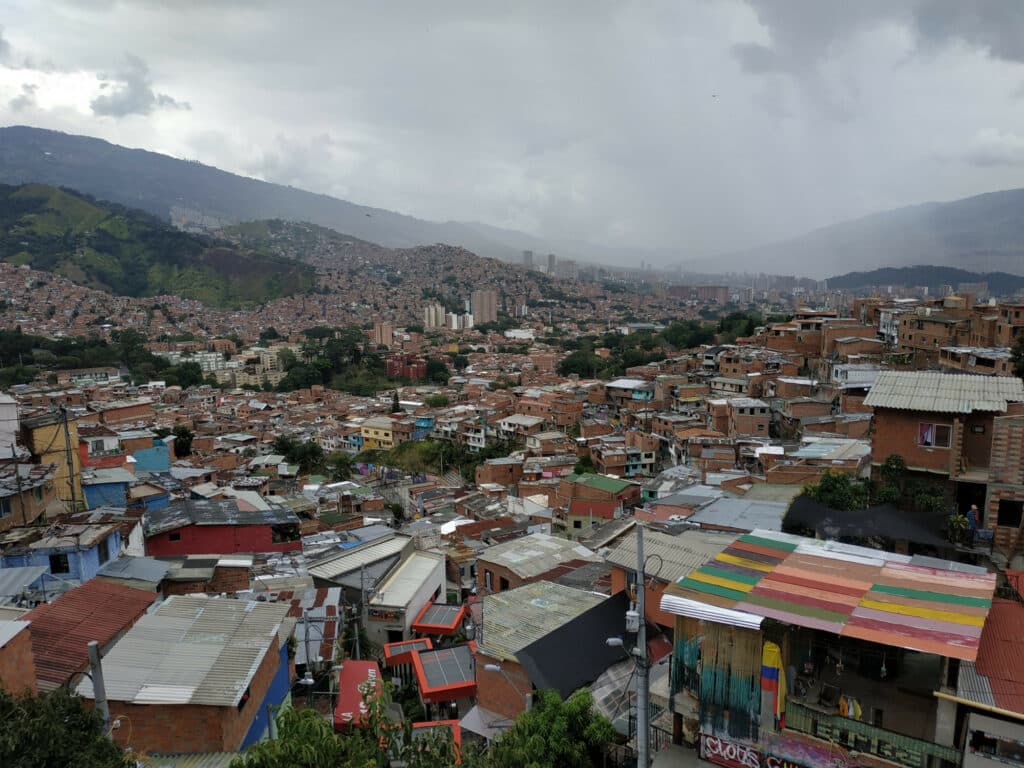
All this, and much more, is the “cultura metro”. Even before the opening of the metro, at the end of the 80s, the government started campaigns to raise awareness about the importance of this transportation system. Along the years, several solidarity and community programs also grew around the metro lines. In a city that wanted to forget the violence of the past, the metro helped to connect the people and make them look forward.
We are not completely sure of how they did it, but it worked beautifully. The inhabitants of the area adopted the metro, they understood its importance and made it theirs. They care about it, they are proud of it, and they respect it.
Having seen the results, such a program should probably be exported to many other cities!
Botero
Fernando Botero, the artist recognizable for his large, exaggerated figures, is one of the most famous citizens of Medellin. Even though he doesn’t live there anymore, he still has a strong connection with the city, and Colombia in general. He donated several statues and artworks to the city and to the museum of Antioquia. Twenty-three of these big statues are now visible in the square facing the museum, in the city center, which became known as Plaza Botero.
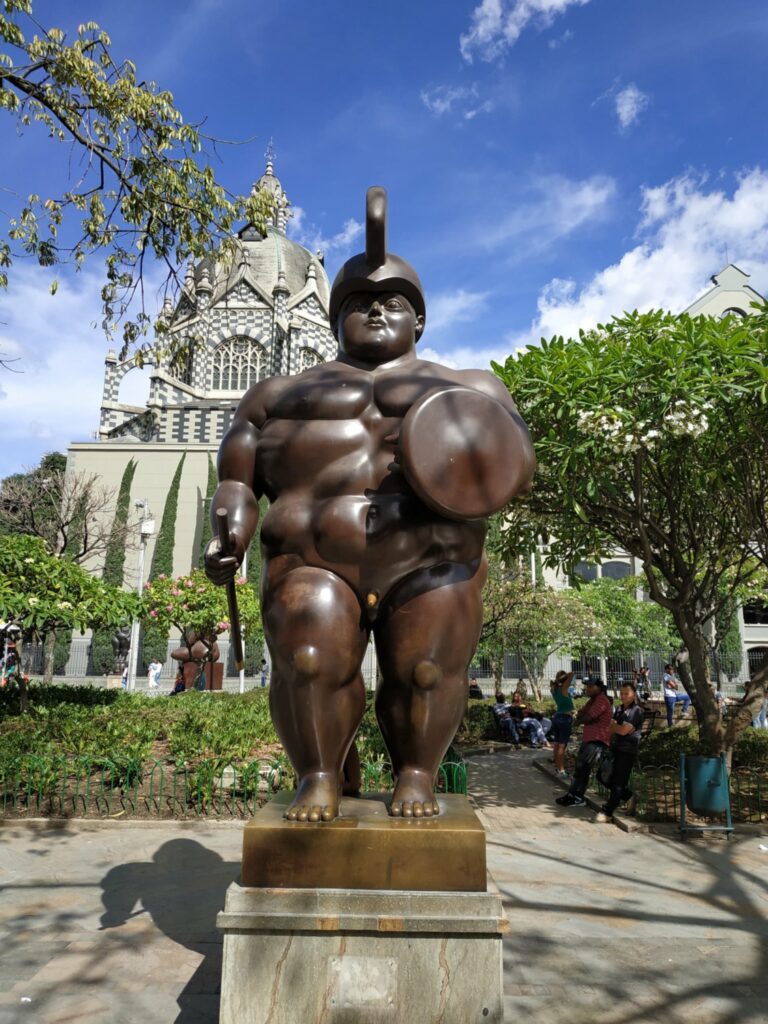
The museum is definitely worth a visit, especially if you did not see the Botero museum in Bogotà. It also hosts artworks from Pedro Nel Gómez, another artist of Antioquia, the region of Medellin. He was part of the Colombian Muralist Movement, inspired by the Mexican movement, which included artists like Diego Rivera. The subjects of his art were then mainly nationalistic, social, and political.
Visiting the Comuna 13
Being such fans of street art, we couldn’t skip a visit to the comuna 13. And what better way to explore it than with a local guide. We joined another free tour, similar to the one we got in Santiago or Valparaiso, this time with zippy tour comuna 13.
We were honestly impressed: not only did we get to see the fantastic murales, but we also got to learn about the recent history of Colombia, and the Comuna. The extreme inequalities lead to the formation of guerrillas, at the beginning only in the most rural areas. Feeling that the government was not doing enough to stop the kidnappings and killings, the richest then created and financed paramilitary groups.
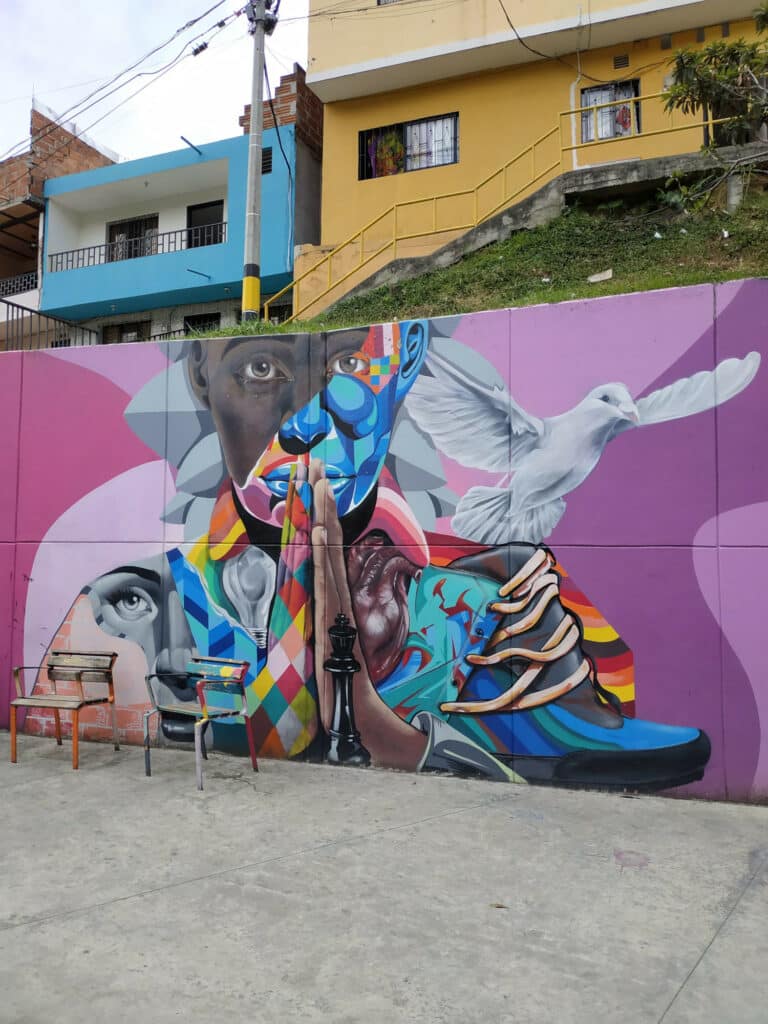
Part of the guerrillas started to move to the cities and eventually took control of the Comuna, making it impossible for the police to even enter the area. After years of fighting, in 2002 the president Uribe launched the Orion operation to retake control. With the help of the paramilitary and using Apache helicopters, they defeated the militias, at the cost of hurting many civilians in the process. The government left the control to the paramilitary that were sometimes more brutal than their predecessor.
Once the paramilitary were ordered to leave, some of them decided to stay to continue controlling the illegal traffics of the area. Several groups then divided the Comuna with invisible borders. But, differently from before, they understood that a safe Comuna could bring tourists, and tourists means money, a part of which they might benefit from. And that is why, today, it is safe to visit the neighborhood. You could even go by yourself, as we saw quite some tourists doing so.
As a means of protest, escape and renewal, graffiti started to be drawn around the whole Comuna. The local government, understanding the importance of the murales to the community, even provided free paint. Big, small, colorful, meaningful, there are drawings for all the tastes. The street-art was not the only thing that flourished: breakdance and hip hop are also important in the area. The tour comprised even a small dance show from a local dancing crew!
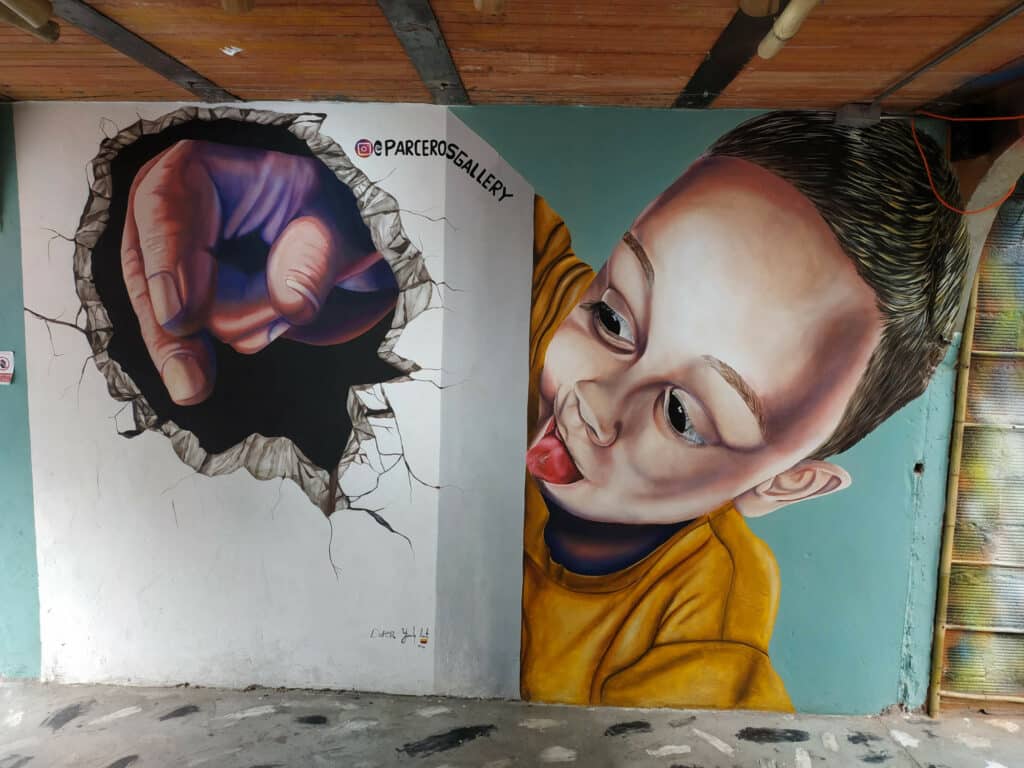
The Comuna develops on steep hills, and mounting to the top will also offer a beautiful panorama over Medellin. The inhabitants used to have to walk uphill, the streets being too small and steep for the cars, but now a series of escalators can bring you easily (and fast) to the top. Also in this case, providing transportation and communication means translated to an improved sense of community and overall safety of the area.
Parque Arví
Arvì is a big park at the border of the city. You can get there easily by metro and a nice gondola lift, passing over a lush forest. Once arrived there you have several options: you can walk in some part of the park, join some guided tours to discover the local flora and fauna, walking or biking. There is also an attraction park, comprising an obstacle course and a zipline. Perfect for a sunny day immersed in nature!
Unfortunately for us, the weather was not the best when we went there. We had the “luck” of arriving in one of the most rainy Septembers of the past years. We mostly remember our inability to sit anywhere because everything was wet.
Jardin Botanico
To visit the Jardin Botanico, we also booked a guided tour. Since it was not the best season to see many of the plants, we are glad we took this option as the guide was very passionate.
Part of the tour was quite similar to other botanical gardens we had already visited during the trip, with flowers on one side, aromatic plants with many nice smells on another.
But then, the guide showed us many plants completely new for us. We saw for example, a carnivorous plant that is able to trap and kill animals between its spiky vines so it could “eat” them. But the most impressive plant was the walking palm. Its roots are mostly aerial and the new ones grow towards the sun-light areas, making the palm move. This walking tree can apparently move up to several centimeters everyday!
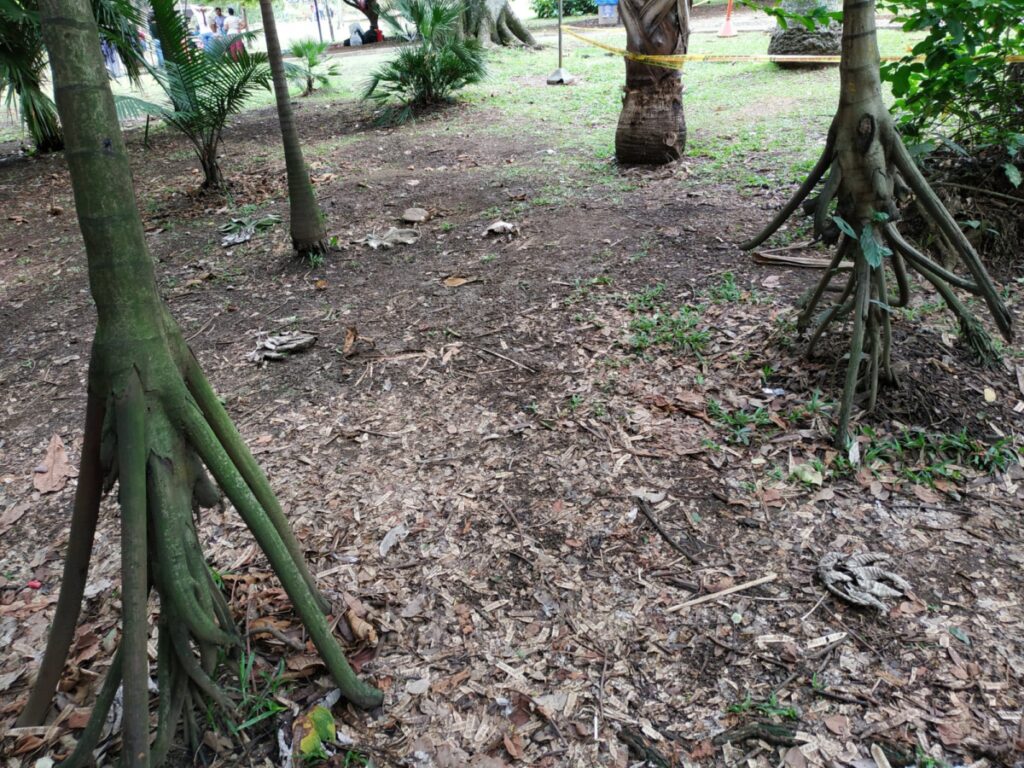
In the garden there are also some beehive but the bees are really small, produce really little honey, and do not sting. They are in fact American bees, and not the European bees that usually gives us honey.
A day trip to Guatapé
If you have time, or you just want to leave the city for a while, an easy day-trip can bring you to Guatapé, a small village reachable by bus. Its houses are very colorful, similar to the ones we saw in Salento. Differently from those houses, here they are also embellished by zocalos, bas-reliefs decorating the lower part of the external walls. The owner of the building is free to choose the theme of the zocalo. We have seen several of them, one better than the other: flowers, animals, farming scene… We really can’t decide our favorite!
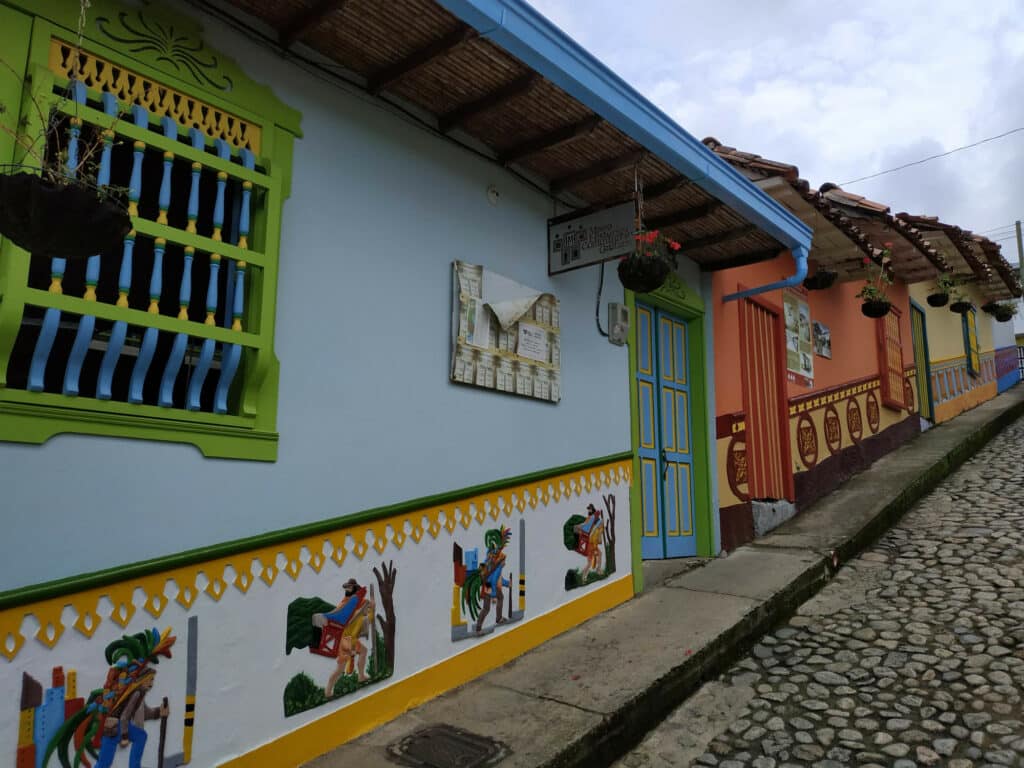
Although we really liked the colorful houses, the real attraction of Guatapé is not really the village, but a 200 m-high monolithic rock, coming out of nowhere and dominating the surrounding area. You can walk up to the top using the 700 stairs on its side. The view from the top is breathtaking, at least if it’s not raining! We could only see pieces of the surrounding artificial lake when the clouds moved.
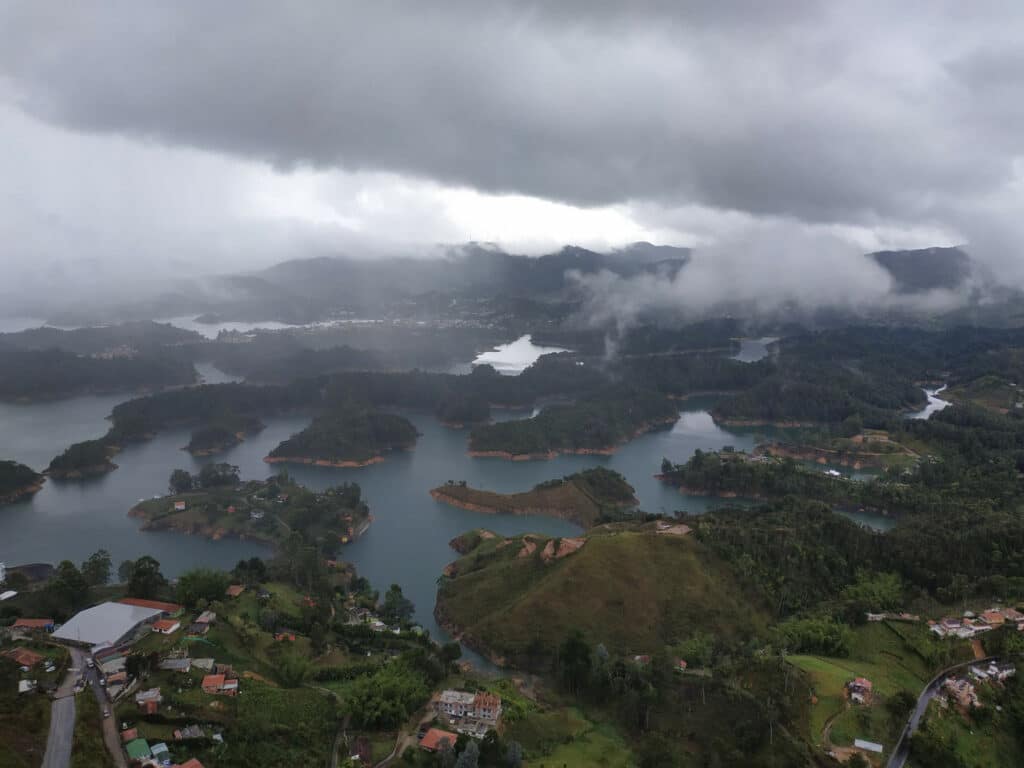
A curiosity: when arriving you might spot a big “GI” painted on the side of the rock. The rock is actually contended between two municipalities (Guatapé and El Peñol). People from Guatapé started writing their town’s name on the side, but they were quickly stopped by their neighbors. And that’s how an unfinished “U” became an “I”.
Our week in Medellin
We usually don’t like to spend too much time in cities as big as Medellin since we prefer wandering in nature. But staying with friends made the whole city experience different. We even learned how to cook the famous patacon, a flatten plantain that you fried. Since one of them was teaching yoga, we also got our very first yoga class! All in all, we didn’t see the time passing while in the city.
Subscribe to our newsletter!
